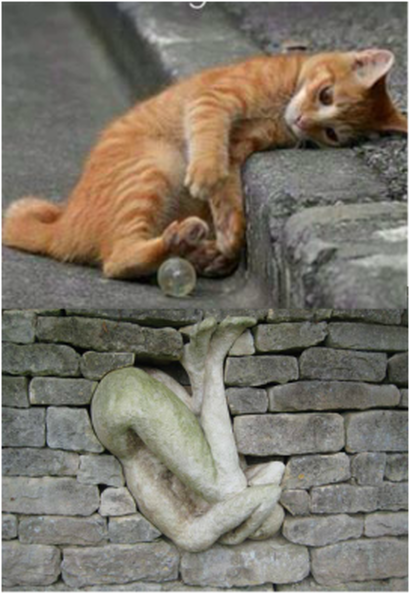
"A friend of mine, Graham Smith, the proprietor of 'Voice of the Valley' and 'Bronte Radio' of Haworth informed us on Face Book yesterday that he has spent 45 years in reporting the news through first word and more latterly pictures. Congratulations Graham; you truly know the merits of both these mediums. It is a combination of words and picture which leads me as a general rule to post only one item per day on my wall: my 'Thought for today.'
Graham's recent words brought my mind back to the early 1970's when I came across an article in an educational magazine/paper. The article more or less reinforced everything I was to discover by different channels in later years of my research into behaviour patterns and more effective methods of educational learning.
I came to learn that the combination of words and pictures is the cornerstone of all language development and communication processes. As a writer of over fifty published books, I know that good writing is a bit like being a magician waving a magic wand; someone who can turn 'this' into 'that' and then make you turn it back again into its original form. This is essentially the process of any effective author and their readership.
All my stories start with an idea (mental image) which I then transform into words on a page. The totality of these words represent a written story. Having turned my mental pictures into words on a page, my readers read my words and in doing so, they turn my words back into images in their own mind. When the image that started off in my mind before I wrote my first word is the same as the image that finished up in my reader's mind, then my purpose has been truly served and communication has occurred between author and reader.The magician's wand has done its job.
In 1974, I read a scientific paper on the merits of different teaching methods. That paper informed me that because the human brain learns by either word or picture and that one of the two is predominant in all learners and varies from person to person, the brain is best reinforced in its learning by the combination of both mediums. Hence; where as the most logically-minded person will learn easier by seeing 'words, numerals and diagrams' written on a blackboard by teacher, the other learning type of individual will retain the information better and process it in their mind easier if it is delivered in image form ( if you draw them a picture). Many teachers recognise this as the 'Show not tell' stratagem of the classroom.
All good teachers and educators however, were advised by the paper to play safe and to develop new learning methods which used both pictures and words to reinforce the very same point being made with all pupils; knowing that in this way their lesson will be more effective, be more easily retained and reach a larger target audience.
So if you are a teacher out there who is feeling like 'giving up trying' or a teacher struggling with getting your message across to some of your pupils and are feeling a bit 'walled in', remember your early training years and how the teaching of toddlers was always done, with words alongside pictures, and know that the learning and communication process best used on adults is no different." William Forde: March 25th, 2014.
